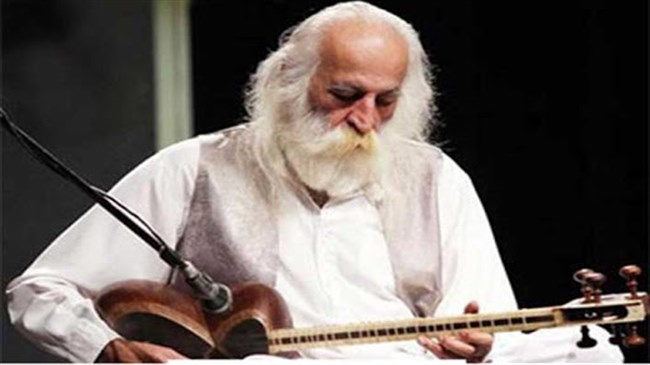The melodious story of the tar

By Mahan Norouzpour*
In the Islamic period, string instruments were more important than other instruments. As a string instrument, the tar has been playing the main role in Iranian music. The significant state of the tar, and its distinguished capabilities, has earned the title of honor for this national instrument. However, this melodious piece of wood is shared by many cultures including Azerbaijan, Armenia and Georgia.
Tar literally means silk, wire, string, etc. However, the term “tar” refers to a specific instrument with certain characteristics. Unfortunately, there is no reliable or documented information about the origin of the tar. From the painting and the tiles of the Safavid Dynasty, it appears that the tar became common during that period. This instrument is made of an empty bowl of mulberry wood, and its surface is covered by lamb’s skin. The handle, where the strings are set, is made of walnut and is tied with camel leg bones. The tar has twenty-eight adjustable gut frets; its vocal range is about two-and-a-half octaves and is played with a small brass plectrum. At first, it had five strings, but a great musician of the 20th century added the sixth sting. The added string is called hengam.
This marvelous instrument earned its honorable and distinguished place in the Qajar Era. Ali Akbar Khan-Shahnaz, the great tar player of that era said, “The tar is the king of instruments, for I cannot acknowledge any other kind of instrument which could play Iranian melodies better than the tar. Since the tar’s frets are fixed, along with its various tunes, we are able to play every melody we desire.”
The tar owes its evolution to the musicians of the last two or three centuries. Since Oriental and Western nations have encountered and communicated, tar players have paid great attention to Western music; they have endeavored to use Western music techniques in playing the tar. Thus, they began to write Iranian melodies and songs with musical notes. Ancient Iranian musicians did not write down their music in notes, while Persian melodies were expressed from the heart, from generation to generation.
Jalil Shahnaz was one of the greatest and respectable maestros of Persian classical music and a virtuoso of the tar. Some great musicians believe that the chapter of the tar in Iranian music closed with the death of Shahnaz.
Also, Mohammadreza Lotfi was one of the most well-known tar players, who made numerous recordings both as a solo artist and along with celebrated Iranian musicians. The mystical creativity and deep-rooted emotional quality in his performance made him the father of a new style in Persian music.
From the tar to the guitar
The guitar is also a member of the family of stringed instruments. Every kind of guitar that is known is shaped, developed, and evaluated in Spain. The oldest trace of this instrument goes back to 1270 A.D. Old paintings and the characteristic similarities between the tar and the guitar indicate that these instruments have been made under the influence of Iranian culture when Muslims captured Andalusia, because the physical shape and names of these two instruments were very similar.
At first, the guitar was called qithara. However, some researchers claim that the origin of the guitar goes back to Ancient Greece, while others believe it originates in the Arab instrument called oud.
At present, tar players are trying to make room for the instrument in contemporary music. A collaborative studio album by Persian musicians, Homayoun Shjarian and Tahmoures Pournazeri, is a suitable example of tar- and guitar-playing in contemporary music. These two instruments are played together in a fusion concert, staged by the Koochi Band on August 29, 2018 in Tehran.
The tar and guitar have played important roles in the history of music. Mankind could not suffer and survive spiritual pains without musical instruments.
William Shakespeare said, “If music be the food of love, play on!”
* Mahan Norouzpour is an Iranian student of philosophy and researcher in Iranian culture and music.

